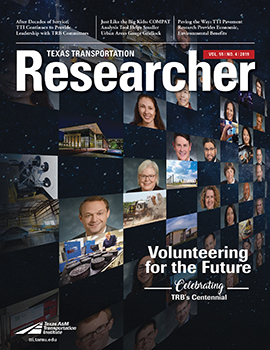General Motors (GM) has awarded a generous grant to the Texas A&M Transportation Institute’s (TTI’s) Teens in the Driver Seat® (TDS) Program. These funds will support ongoing outreach efforts in Texas, where TDS was born, as well as Georgia, reaching some 230 high schools and 200,000 students. TDS will also be able to expand its reach to Michigan, Ohio and Indiana.

Since 2012, some 2,800 teens have died each year in car crashes — the equivalent of a school bus loaded with teenagers crashing once weekly for an entire school year. On a per-mile- driven basis, teens are eight times more likely to die in their first six months of driving than adults, and for every American teen killed in a car crash, about 100 more are injured. In 2017, half of teen passenger deaths occurred when another teenager was driving. Besides the human tragedy of teen deaths, the U.S. societal costs of these crashes amount to $30 billion per year.
Founded in 2002, TDS leverages positive peer pressure to raise awareness of the five most dangerous teen driving habits: driving at night, speeding and street racing, driving distractions, not wearing a seat belt, and alcohol/drug use. Safety experts recruit, educate and inspire young drivers to engage their peers to promote positive behavioral change. Developed by TTI’s Youth Transportation Safety Program (YTS) staff and focus-group tested with youth advisory boards, TDS provides educational materials free of charge to participating schools.
“Teen drivers today face more challenges behind the wheel than ever before,” explains TDS founder and TTI Senior Research Engineer Russell Henk, manager of YTS. “Smartphones, the glamourized ‘need for speed,’ and peer pressure to drive while under the influence are just a handful of dangers they face.”
One of the hallmarks of the program is capturing measurable outcomes to demonstrate the effectiveness of its sponsors’ investments. For the GM grant, the short-term goals are to increase the awareness and knowledge of effective vehicle and road safety practices; increase teen knowledge of teen traffic safety issues, methods and resources; increase the rates of observed teen seat belt use; and decrease the rates of teens driving while using electronic devices, such as cellphones.
“Despite the challenges, teen drivers can make good decisions with the right information,” Henk says. “Giving them that information and rewarding responsible behavior are what TDS is all about.”


